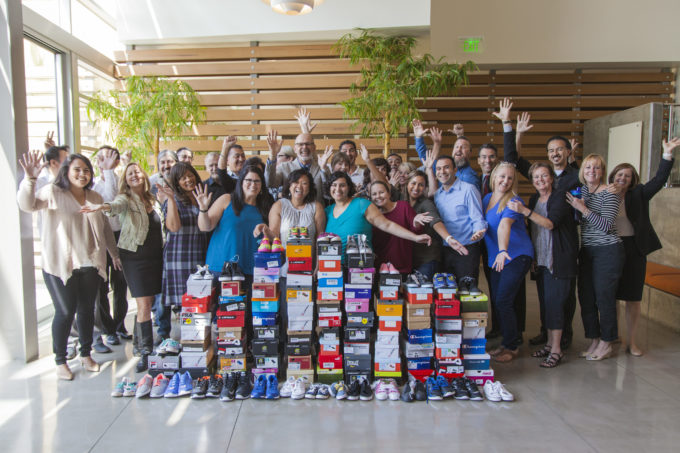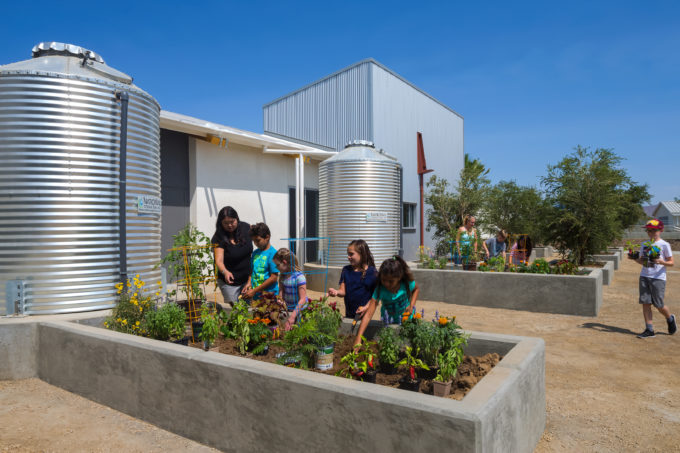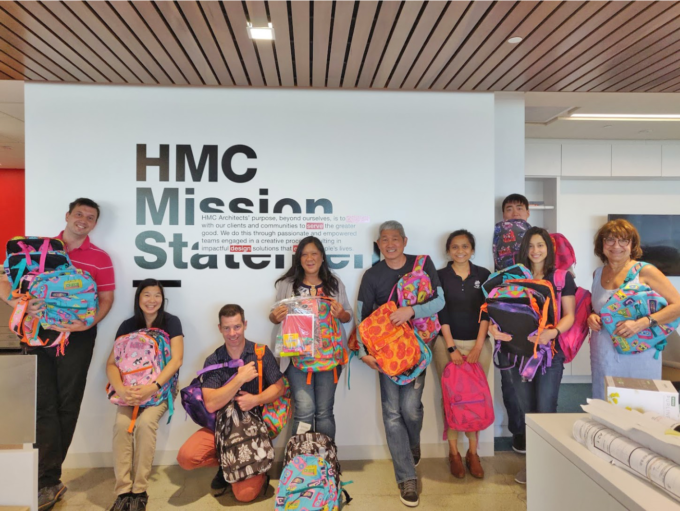HMC Architects’ nonprofit organization—the Designing Futures Foundation (DFF)—has surpassed one million dollars in charitable donations since its inception in 2009 as it celebrates its ten-year anniversary.
Launched with an initial endowment of $1.9 million, HMC’s DFF, a nonprofit 501(c)(3), celebrates a major milestone having invested more than one million dollars in its ten years of existence in the communities in which the firm operates.
The DFF’s mission is to build a better world and over the past decade the foundation has made charitable investments in key focus areas that align with HMC’s core values and competencies, including:
- The award of more than 180 grants to nonprofit organizations with a focus onarchitecture and design to positively impact the built environment.
- Science, Technology, Engineering, Math (STEM) and Science, Technology, Engineering, Arts, Math (STEAM) education to train the next generation of creators and innovators.
- Environmental sustainability and resilience to create a sustainable and regenerative future.
- Health and human services to build healthy and vibrant communities.
- The award of 215 educational scholarships to outstanding and deserving high school and college students who are pursuing STEM-related careers.
“I’m very proud of the DFF and the people of HMC who have contributed so much over the last ten years,” said HMC President and CEO Brian Staton. “Serving the greater good and giving back to our communities is what distinguishes our firm from others, and we are truly making a difference in people’s lives.”

Over the last decade, the DFF’s investments have been expansive. For example, the DFF awarded a grant to the Riverside Art Museum where HMC employees provided pro bono services to design a Julia Morgan tribute wall. Housed in a 1929 building designed by Morgan, the wall is a tribute to her being the first female architect honored with the AIA Gold Medal. As a result of the project, thousands of local school children and museum visitors are learning about the impact and legacy of Morgan, one of our country’s most groundbreaking female architects. The DFF has made a number of investments to create a sustainable and regenerative impact, too. This includes funding organizations such as the U.S. Green Building Council (USGBC) Inland Empire, Lyle Center for Regenerative Studies, and The Ecology Center in San Juan Capistrano, California.

This year in an effort to strengthen the K-16 STEM education pipeline and to support California’s vibrant creative economy, the DFF launched “Bridge to College”— a signature initiative in partnership with six community colleges throughout the state to provide essential funds to community college students who desire a career in architecture and design. The DFF also provided a $10,000 seed grant to help California State Polytechnic University, Pomona (Cal Poly Pomona) start a healthcare architecture studio—the first of its kind west of the Mississippi.
The DFF invests in K-12 STEM/STEAM education programs and leverages its impact by pairing employee volunteerism with funding. For example, HMC employees teach in the Architecture, Construction and Engineering (ACE) Mentor Program in California’s Inland Empire where the DFF also provides scholarships to students who complete the program. In the Bay Area, the DFF partners with Leap Arts in Education to fund architecture residencies in K-5 elementary schools. The DFF has supported college access and STEM education programs that expand opportunities for disadvantaged girls and minorities by partnering with nonprofit organizations such as Promise Scholars, LA Makerspace, DIY Girls, YWCA TechGYRLS, and Girls Garage. The DFF also supports Bright Prospect, a college access and retention program in Pomona, California and hosted a career day for students aspiring to become architects, engineers, or designers, topped off by a tour of HMC’s Ontario, California headquarters.

To address the homeless crisis in southern California, the DFF has supported the United Way of Greater Los Angeles and has recently made grants to support the Los Angeles County “Yes to ADU” (Accessible Dwelling Unit) initiative in partnership with the county’s Department of Arts and Culture, and LA-Más, an urban design nonprofit that helps lower income and underserved communities shape their future through policy and architecture. To build transitional housing for homeless individuals, the DFF has also provided funding to organizations such as HomeAid in the California’s Inland Empire.
To positively impact the built environment internationally, the DFF partnered with Adanu to support the construction of a playground and garden in Ghana and Journeyman International to support community development projects in Rwanda. The DFF also provided funding to support a project—led by HMC employees in partnership with Cal Poly Pomona students—for the research and construction of a sustainable community center in Tecate, Mexico in partnership with Corazón, Inc.
DFF Executive Director Adrienne Luce says the foundation serves as a natural extension of HMC’s architectural legacy to build vibrant, sustainable communities. “As a firm focused on architecture, which is essential to the very fabric of our society, HMC is committed to leveraging all of its assets to positively impact the communities in which it serves.”
